“One cannot think well, love well, sleep well, if one has not dined well” – Virginia Woolf

We wheeled our colorful cart back to Portland’s Newmark Theater to hear Bita Moghaddam, the Chair of Behavioral Neuroscience at OHSU, provide the nutritious conclusion to this year’s OHSU Brain Awareness lecture series on “Nourishing Your Neurons.”

LEARN MORE: How you fuel your brain creates pivotal changes
LEARN ABOUT ALL THREE LECTURES: Brain play, diet & soup!
We’d gathered another inspiring group of outreach volunteers to answer audience questions, including Lola Latham, Melissa Purdy, Kate Gilworth and Abeer Alabbad from the Freshman Inquiry (FRINQ) University Studies course sequence on the Neuroscience of Creativity & Learning at Portland State University…
LEARN MORE: Science of Creativity & Learning PILOT 2018

Volunteers with Kate Stout, of the OHSU Brain Institute
They were joined by additional participants from PSU, among them Ashley Keates, Jade Osilla, Angel Nichols, Madeline Ogle, Sara Moreno, Alex Kunz (who is also President of the PSU Neuroscience Club), and Sulema Rodriquez (who is also an NIH BUILD EXITO scholar), Joey Seuferling, our Noggin Resource Council member for healthcare and hospital outreach, and Veronika Lobova from WSUV…

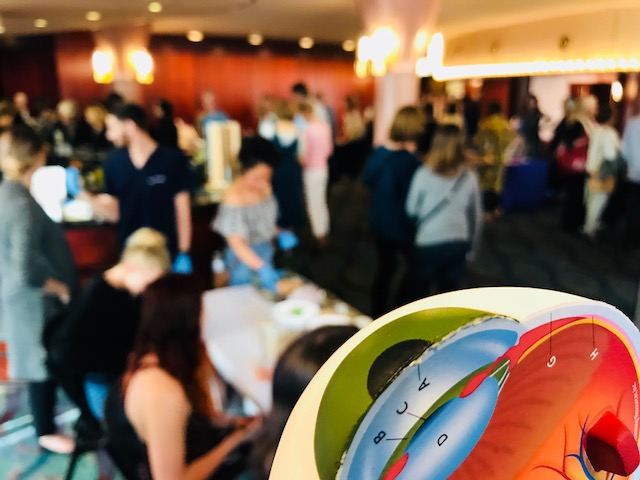
“I’m here to talk about two of my favorite things,” began Dr. Moghaddam. “Brains – and eating fat!”
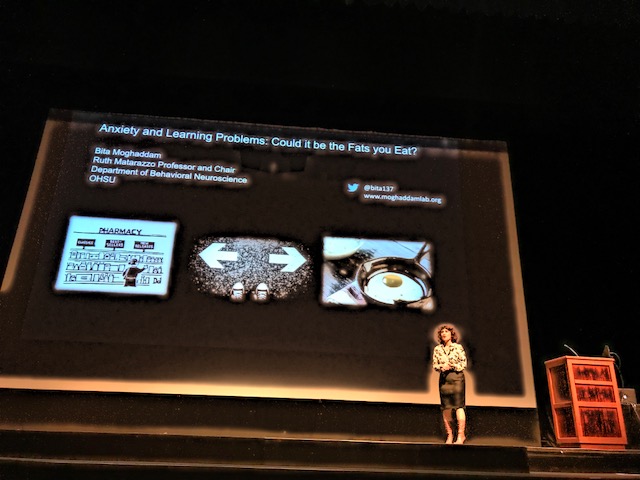
“Think back to when you first visited a doctor – or perhaps the first time you brought your child to a pediatrician,” she continued. “You likely filled out a questionnaire asking about your family history – of heart disease, cancer, high blood pressure, glaucoma…”

“I hope,” she added, “that they now ask you about anxiety, depression, and suicide, too…” If there is heart disease or cancer in the family, your provider will inquire about your lifestyle and diet, and make suggestions. “But with mental health disorders,” she noted, “chances are high that they won’t ask those questions…”

“And why not?,” asked Dr. Moghaddam. “Your brain is a metabolic machine…”
LEARN MORE: Appraising the brain’s energy budget
LEARN MORE: Brain metabolism in health, aging, and neurodegeneration

Brains use lots of energy, and that energy comes from food. Dr. Suzana Herculano-Houzel, who presented the first Brain Awareness lecture, also noted the high cost of big brains. While human brains make up 2% of our body’s weight, they consume about 20% of the calories.
LEARN MORE: Soup for Brains!

“This is a thing of beauty, an engineering marvel – and it’s not cheap to run!” said Dr. Moghaddam.

“And you require more than calories,” she explained. Brains and bodies need macronutrients (proteins, carbohydrates, fats), and also micronutrients (e.g., vitamins, minerals) to run well. But if you eat “Twinkies for breakfast and melted Velveeta ‘cheese food‘ for lunch one day, you’re not going to develop atherosclerosis.” However it will affect your brain function that same day.

“Food,” concluded Dr. Moghaddam, “is very much, in real time, at the service of helping your brain function well…”
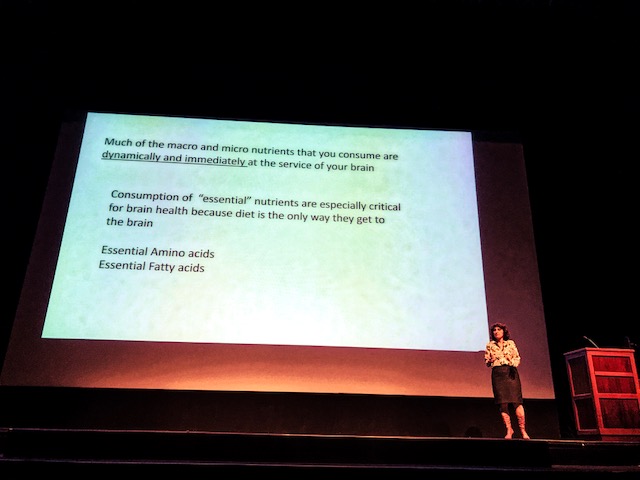
“Carbohydrates, amino acids – these are not the problem,” she continued. Most North Americans eat plenty of carbs and protein. Essential fatty acids, however, are another story…
LEARN MORE: Changes in the nutrient content of American diets
LEARN MORE: The macronutrients, appetite and energy intake
LEARN MORE: Micronutrients in health and disease

“Your brain is 60% fat”
Why does your brain have so much fat? “As your brain cells are firing, they are transmitting information to other neurons in the millisecond range, so your brain can do its work,” explained Dr. Moghaddam. “As each cell fires, information travels down its axon, and these axons are insulated by fat…”

Neurons allow charges to move across membranes along the fat-insulated, wire-like axons in your brain…

There are lots of fatty components essential for healthy communication in your brain, including cell membranes…
The precise timing and distribution of information along networks of connected neurons depends on cellular structures made of fat. All cell membranes, for example, consist of two layers of phospholipids, molecules with both a charged, hydrophilic (“water loving”) phosphate “head,” and an uncharged, hydrophobic (“water fearing”) fatty acid “tail…”
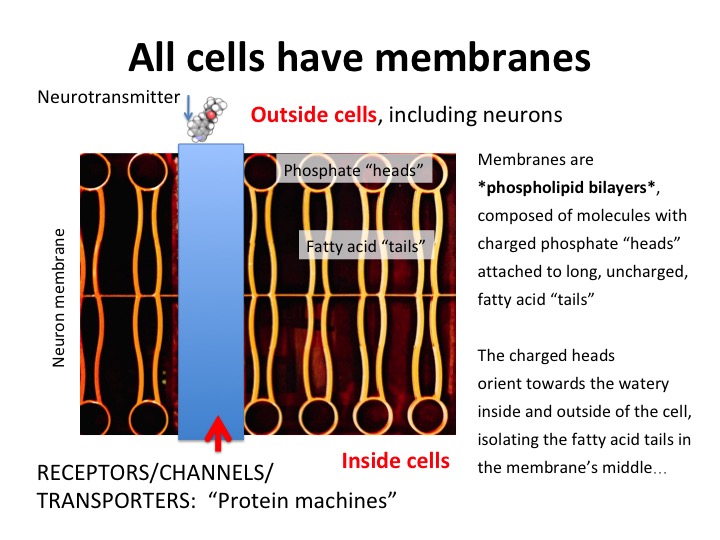
These are “magical excitable membranes,” exclaimed Dr. Moghaddam, with their fat-laden bilayers (orange in the above image) studded with embedded protein machines (e.g., receptors, channels; in blue), whose own structural form (and thus what they can do, and how they function) is partly determined by which fatty acids, and in what proportion, make up their surrounding phospholipid environment…


“The endocannabinoids alone are implicated in anxiety, and schizophrenia – and are the most abundant neurotransmitters in the brain,” noted Dr. Moghaddam. “They are very important for brain health, and the precursor to endocannabinoids are fatty acids” embedded in the phospholipid bilayers of membranes…
LEARN MORE: Pot Therapy
LEARN MORE: Targeting the endocannabinoid system to treat anxiety-related disorders
LEARN MORE: Cannabinoids and schizophrenia: therapeutic prospects

Two important types of fatty acid are omega 3’s (n-3) and omega 6’s (n-6), which differ in terms of the first point of saturation (either the third or sixth carbon in the chain). Alpha-linolenic acid (ALA) is an important omega 3 which must come from our diet, along with two other critical fatty acids known as eicosapentaenoic acid (EPA) and docosahexaenoic acid (DHA)…


Synthesis of EPA, DPA and DHA from ALA
Linoleic acid (LA), an omega-6 fatty acid, is another essential dietary constituent. Once ingested, it can be converted into arachidonic acid (AA), the precursor for an important endocannabinoid known as anandamide…

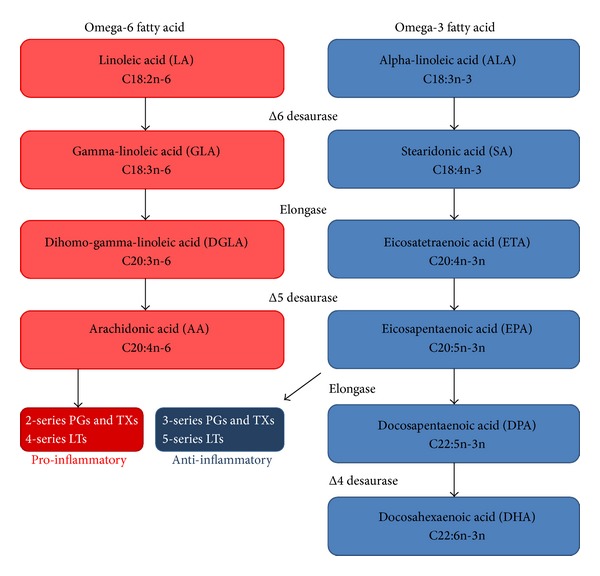
LEARN MORE: An introduction to the endogenous cannabinoid system
LEARN MORE: Omega-3 Fatty Acids and Depression: Scientific Evidence and Biological Mechanisms
LEARN MORE: Omega-3 Fatty Acids and Health
We eat far too much omega-6. “Our western diet – even low fat diets – are very off in terms of the ideal omega 6 versus 3 ratio,” noted Dr. Moghaddam. Historically, humans consumed a diet with an omega-6 to omega 3 ratio of 4:1; however, Americans today ingest a ratio closer to 10:1 – in some cases as high as 25 times more omega-6’s than omega-3’s!

And plenty of current research implicates an omega-3 deficiency in depression, anxiety, Parkinson’s, ADHD, dementia, eating disorders, autism…
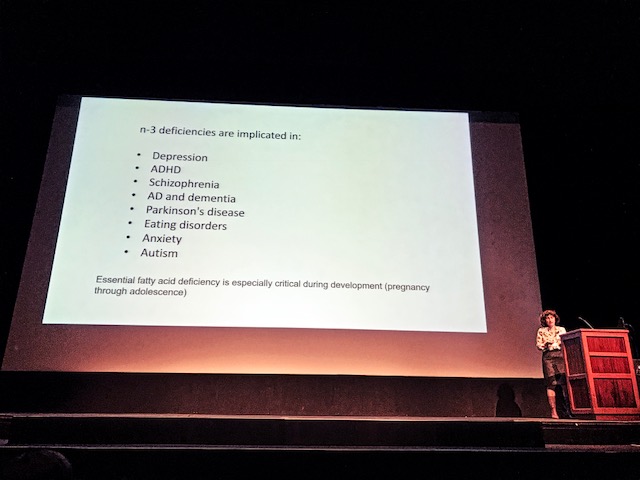
Sources of those missing omega-3’s include flaxseed (for ALA), and fish (for EPA and DHA). ALA, interestingly, isn’t easily converted into the other essential omega-3’s in adults, particularly DHA. “Your dog can convert ALA to DHA, a cow can, too – but all that flaxseed we’re buying is not a good source for us.”
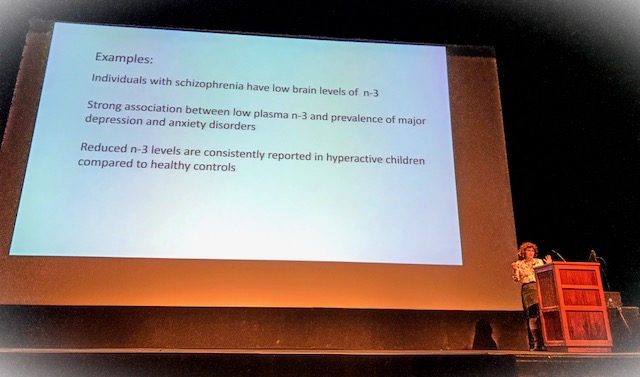
LEARN MORE: The essential fatty acids omega-6 & omega-3: from discovery to use in therapy
LEARN MORE: Detection and treatment of omega-3 fatty acid deficiency in psychiatric practice
“However, my own interest in this topic went even deeper,” Dr. Moghaddam told us. She is particularly fascinated by the interaction between environmental experience and genetic susceptibility to mental disorders, and the potential role of diet…

“Inadequate nutrition is considered a known ‘environmental insult’ in the cancer field – so what about the brain?” she asked. “The brain is very dependent on adequate nutrition.”

Dr. Moghaddam is not overly impressed by reports of increased stress in today’s youth compared to past generations. “We are attributing many of these issues to social media, and stress – but stress, and lots of it, was present in the 1950s. We’ve evolved to handle stress.”

Yet “for the last 80 years young Americans have been getting more anxious and depressed.” So what started happening 80 years ago..?
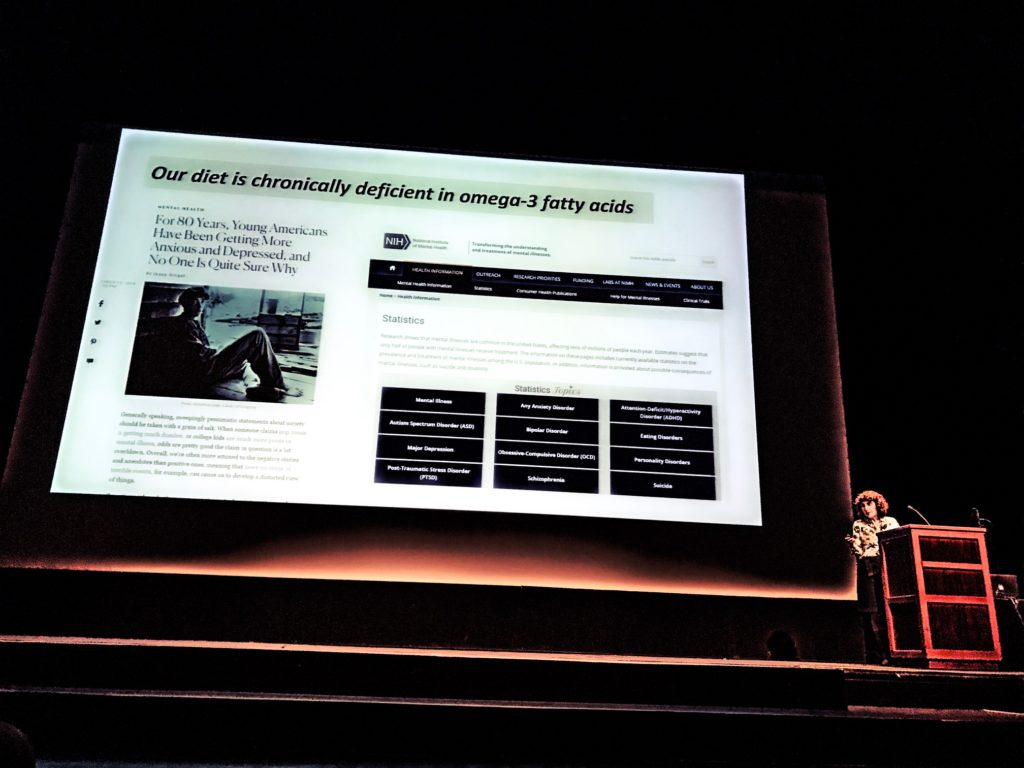
LEARN MORE: For 80 Years, Young Americans Have Been Getting More Anxious and Depressed, and No One Is Quite Sure Why
“Fats from animals that eat grass are high in omega-3s,” explained Dr. Moghaddam. “So are eggs from pasture-raised chickens. But a big agricultural change began around 80 years ago – we switched from grass to grains for cattle and poultry…”

LEARN MORE: A review of fatty acid profiles and antioxidant content in grass-fed and grain-fed beef


These farming changes changed our diets. “That jar of corn oil will outlive all of us by 100 years, while your grandma’s fat would go rancid much more quickly.” But grandma’s fat was better for you, and kept the n-6/n-3 ratio at a healthier level. Today, warned Dr. Moghaddam, salad dressings, energy bars – just about everything – is prepared with fats higher in omega-6’s than omega-3’s…
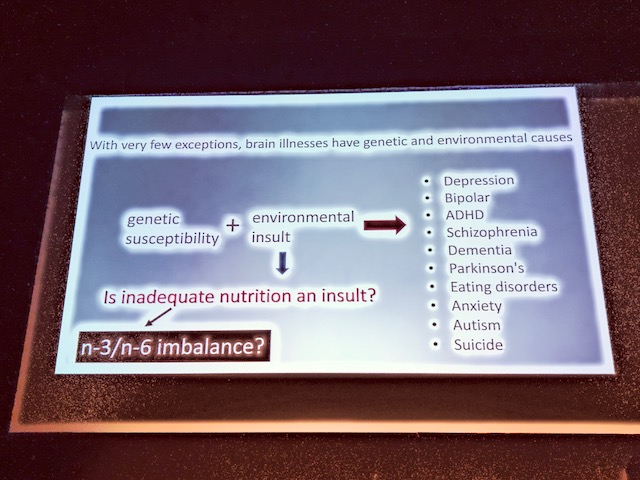
So is this imbalance in fatty acids an actual environmental insult contributing to the increase in mental health disorders? While at the University of Pittsburgh, Dr. Moghaddam fed rats a chronically omega-3 deficient diet (like the modern American diet), and tested the first and second generations for anxiety, working memory, learning, attention, and activity…

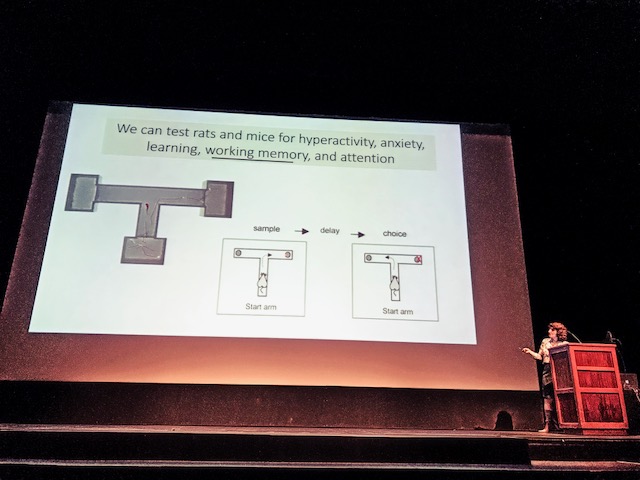
On a host of measures, she found subtle deficits in the first generation of rats raised on omega-3 deficient diets, and more pronounced impairments in the second…


Omega-3 deficient adolescent rats had problems with memory, learning, and attention, and were hyperactive and more anxious. “Many of these disorders involve dopamine neurons,” she explained, “which are very strongly implicated.

And you only see alteration in dopamine in the dorsal striatum – it is not a brain wide effect.” The dorsal striatum, she added, is “involved in action selection and decision making…”
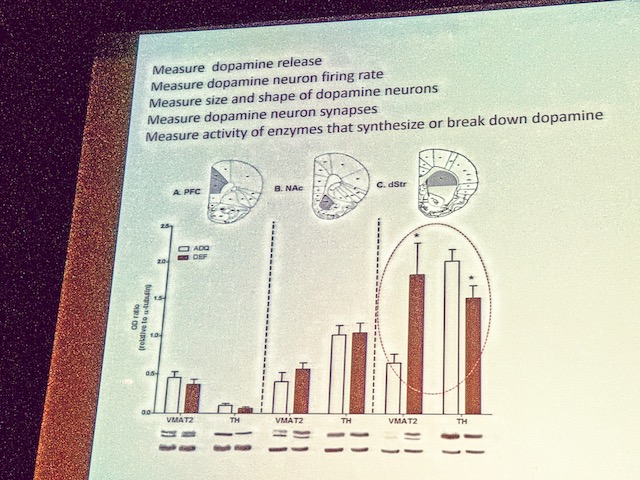
White bars (ADQ = adequate diet) vs. Brown (DEF = deficient in omega-3’s)
LEARN MORE: Dopamine signaling in the dorsal striatum is essential for motivated behaviors
There is even more evidence suggesting that omega-3 deficient diets are an environmental insult. The adolescent rats raised without sufficient omega-3’s also showed mobilization of their microglia – small, immune system cells that help defend the brain. “If there’s an environmental insult, your microglia are activated,” explained Dr. Moghaddam.

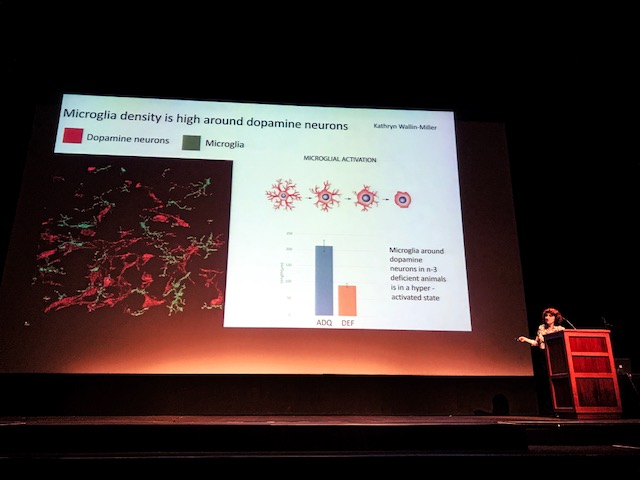

LEARN MORE: Microglia in Health and Disease
LEARN MORE: Lifelong Nutritional Omega-3 Deficiency Evokes Depressive-Like State
LEARN MORE: Functional and Structural Benefits Induced by Omega-3 Fatty Acids During Aging
LEARN MORE: Omega-3 Fatty Acids and Depression: Scientific Evidence and Biological Mechanisms
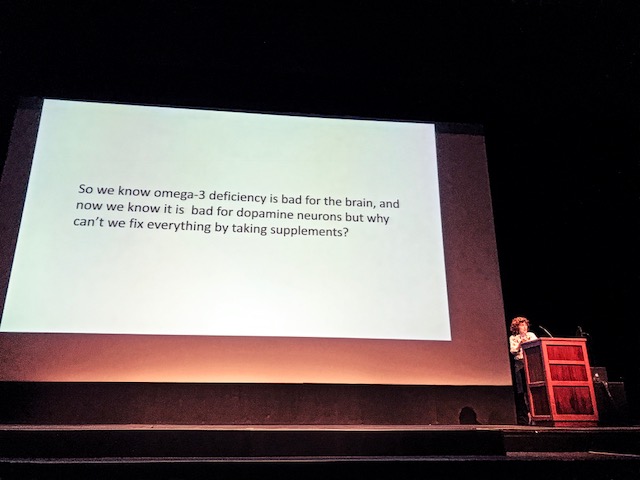
“So we know omega-3 deficiency is bad for the brain, and now we know it is bad for dopamine neurons – but why can’t we fix everything by taking supplements?”

LEARN MORE: NIH study shows no benefit of omega-3 for cognitive decline
“Everybody thought just take omega 3 supplements, but the results have been inconsistent and inconclusive. Why?” asked Dr. Moghaddam.
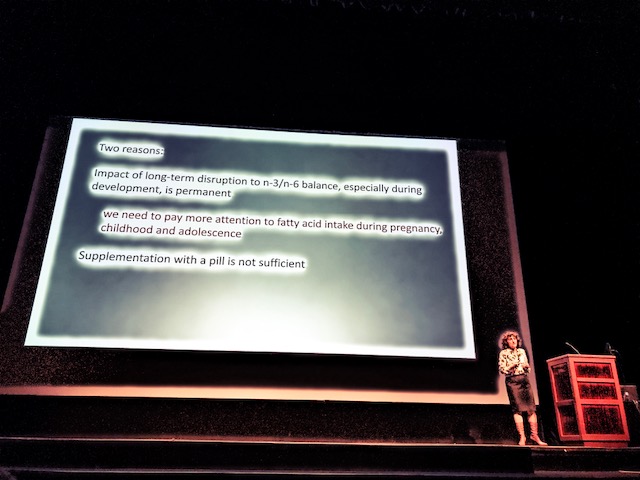
“The impact of long term disruption to the omega-6/omega-3 balance, especially during development, may be permanent.” Also, taking one daily pill is not enough to counterbalance the unhealthy mountains of omega-6 laden foods in our corn/grain-saturated American diets…


Also, what’s actually in those supplements?!

While the Food and Drug Administration (FDA) claims to “regulate…dietary supplement products and dietary ingredients,” they do so “under a different set of regulations than those covering ‘conventional’ foods and drug products,” because of the Dietary Supplement Health and Education Act of 1994 (DSHEA)…

LEARN MORE: Dietary Supplement Products & Ingredients
Unlike prescription drugs, for profit manufacturers of supplements (which can also contain powerful psychoactive ingredients with implications for human health) largely “regulate” themselves. They are asked to adhere to these looser regulations established by the FDA, which only steps in when multiple reports of injury or death come to the attention of federal authorities…
LEARN MORE: Can Regulators Keep Up with the Supplements Industry?
LEARN MORE: Orrin Hatch & the dietary supplement health & education act: Pandora’s Box revisited
LEARN MORE: Orrin Hatch is leaving the Senate, but his deadliest law will live on

So in your unregulated fish oil pill, on the label above only 300mg out of 1000mg are identified as omega-3’s (EPA and DHA). “What’s the other 700mg?” Dr. Moghaddam wondered. “Corn oil..? Another omega-6? That will throw off your ideal 4/1 ratio.” Plus, as there’s no industry oversight, there is no guarantee that your pill really has EPA, DHA or any omega-3 fatty acids at all…

Once again, to our Noggins, this seems like an area where neuroscience research on the critical importance of diet for brain health and development might better inform more effective public policy, and contribute to the well-being of all…

After this nourishing (and somewhat anxiety-inducing) presentation, we answered more questions about brain research, membranes, fatty acids, farming, public policy and mental health…



Many, many thanks to Kate Stout of the OHSU Brain Institute for once again welcoming our undergraduate and graduate volunteers!

LEARN ABOUT THE FIRST LECTURE WITH SUZANA HERCULANO-HOUZEL…
Soup for Brains!

How much energy does a brain require? How many brain cells do we have? Are humans unique in terms of brain size, number of neurons – or social skills, tool use, deception, or play..? How do you make “brain soup?” And what’s the best way to bring fresh cerebrums on an international flight?!
LEARN ABOUT THE SECOND LECTURE WITH ADELE DIAMOND…
Diamond advice: brains, art, stories & play

What’s the best way to educate a child? How do we help them grow, and develop self-control, focused attention, working memory, social skills, discipline and the motivation to meet life’s challenges and persevere? What have we learned from brain research about the role of schools and families, academics, assessments – and play?


